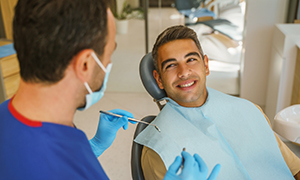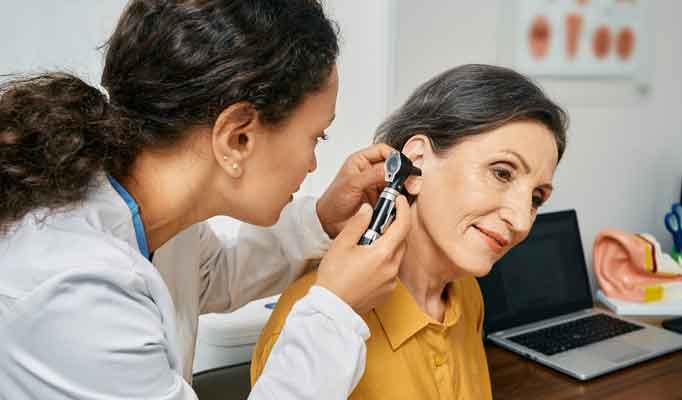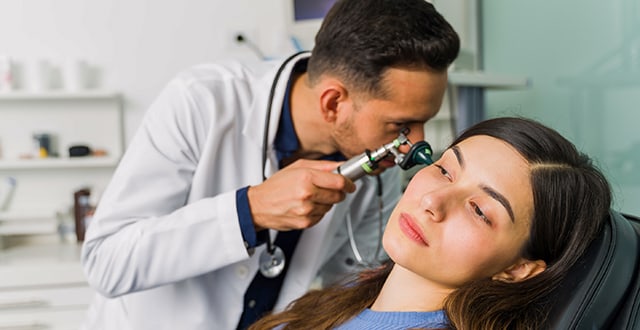Vision-related injuries are widespread and affect all types of business. Digital eye strain, scratched corneas, chemical burns, and other sudden eye traumas are some common vision ailments in today's workforce. According to U.S. Bureau of Labor Statistics (BLS) data, the incidence of eye injury is high. The agency reports an alarming 18,510 eye-related injury or illness cases that resulted in at least one day away from work in 2020 alone.[1] Whether in an office, industrial setting, health care setting, or other type of work environment, companies must reinforce the importance of preventing eye injuries and vision-related issues.
Looking out for employee vision health
Employers can take many approaches to advocate for the vision health of their employees. Knowing what to look out for across workplace settings is the starting place for protecting your employees—no matter what type of role they play in your organization.
Different industries carry different risks. According to BLS data, construction and trades workers run the greatest risk, recording 2,120 eye injury and illness cases involving days away from work in 2020.[2] While some risks may seem more important to prevent, any potential danger to eyesight is important to combat.
Uphold an effective eye safety strategy
Always encourage eye safety. Employers should provide employees with the specific knowledge and support they need to protect their eyes. Make sure they understand the hazards, wear the proper personal protective equipment for their eyes, know how to help mitigate risks, and how to handle accidents if they do happen. Whether you have employees who primarily work with computer screens or staff who work in a hands-on environment, appropriate eyewear for the hazards present can help reduce the risk of eye injury.[3]
Be persistent about eye safety. Reinforcement around safety measures relative to potential workplace hazards is essential. The saying, "If you see something, say something," applies to eye protection in the workplace. Never miss an opportunity to help an employee protect their eyes. Doing so sets the tone with employees and shows your commitment to their well-being. A mention may even uncover an opportunity for you to boost improvement. For example, you may find that an employee isn’t wearing their eye protection because they are having issues with the fit—potentially an easy fix that can help prevent an instance of eye injury.
Industry-specific tips for protecting eye health
Manufacturing workers. If your company manufactures a product, the employees who use and maintain machinery face more risk due to the potential for airborne debris and other hazards than the employees who support operations through administrative roles in the office. In this scenario, protective eyewear is the key to shielding your eyes from potentially dangerous debris.
Office workers. Employees who spend a lot of time in front of a computer screen are also susceptible to vision issues. Eye strain or fatigue is a common result of too much screen time. If this is true for you, try the 20-20-20 method to help alleviate the issue. Rule guidance suggests the following: Every 20 minutes, look away about 20 feet in front of you for 20 seconds. Those who work in an office should take care to wear contacts or glasses with a current prescription from an eye care provider as needed to help avoid eye strain.
Nondirect workers. Remember that eye injury can occur even when passing through an area where work is being done—making it paramount for those in industrial and other environments where airborne debris and other hazards are present to always wear the proper eye protection.
Safeguarding All workers
Employee hygiene. Encourage employees to practice good hand hygiene. Messaging in a hallway or breakroom can remind employees to wash their hands regularly to help remove germs, irritants, and debris that could get in their eyes should they rub them.
Adequate lighting. No matter what the setting, make sure there is proper lighting. Too much or too little light can make it difficult to see. Bright lights shining on or behind display screens make it difficult for employees to see their work and cause them to strain their eyes, which can lead to eye fatigue.[4]Ensure that workstations have supplemental light if they need it or protection from excess light.
Offering an employee vision benefit
Vision benefits give employees access to routine services like eye exams that can help them keep their vision strong. While a comprehensive vision exam can detect refractive errors such as myopia (nearsightedness) and hyperopia (farsightedness), it can also help detect common eye diseases and disorders that can lead to vision loss.[5],[6] Not only is this beneficial for current employees, but vision benefits are also part of the comprehensive benefits package needed to attract and retain top talent. Bundling vision benefits with your health insurance is a more cost-effective approach to this care and puts it within reach of employers like you and your employees.
What UPMC Health Plan has to offer
Because we are part of an integrated health care delivery system with UPMC—one of the nation's top-ranked health systems—we leverage shared expertise across all areas of health coverage, including employer group ancillary benefits. As a leader in providing access to high-quality care to support total well-being, we understand the benefits of investing in vision insurance for your employees.
Connect with us
Find out more about ancillary benefits offered by UPMC Health Plan.
Contact your producer or call your account manager.
[1]Bureau of Labor Statistics, U.S. Department of Labor, The Economics Daily, Workers suffered 18,510 eye-related injuries and illnesses in 2020 at bls.gov/opub/ted/2023/workers-suffered-18510-eye-related-injuries-and-illnesses-in-2020.htm (visited June 12, 2024).
[2]Ibid.
[3]Eye and face protection: Hazards and solutions. Occupational Health and Safety Administration. Accessed June 12, 2024. osha.gov/eye-face-protection/hazards-solutions
[4]Computer Workstations eTool. Occupational Safety and Health Administration. Accessed June 26, 2024. osha.gov/etools/computer-workstations/workstation-environment
[5]About common eye disorders and diseases. Centers for Disease Control and Prevention. May 15, 2024. Accessed June 26, 2024. cdc.gov/vision-health/about-eye-disorders/index.html
[6]Why eye exams are important. Centers for Disease Control and Prevention. May 15, 2024. Accessed June 26, 2024. cdc.gov/vision-health/about-eye-disorders/why-eye-exams-are-important.html



